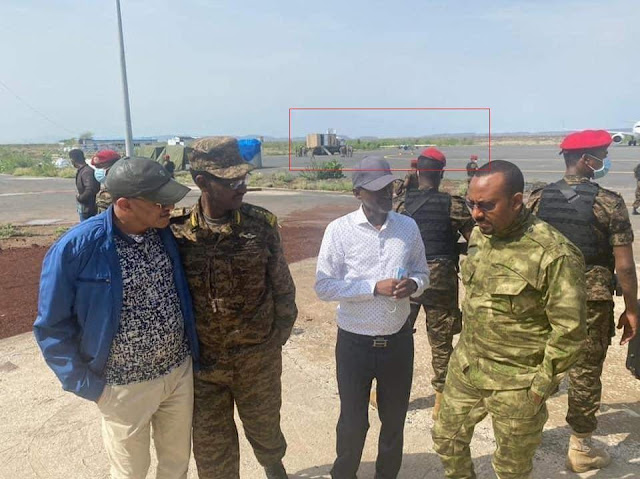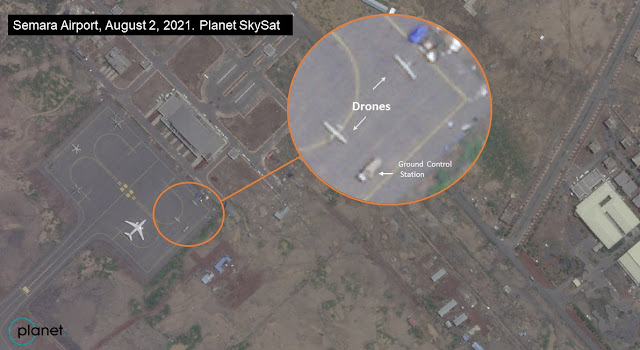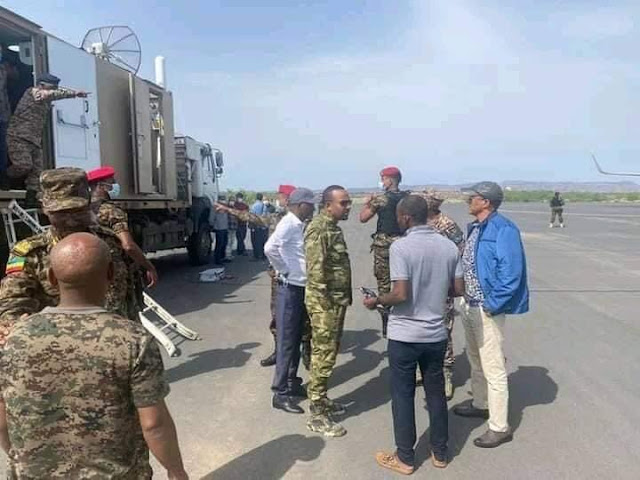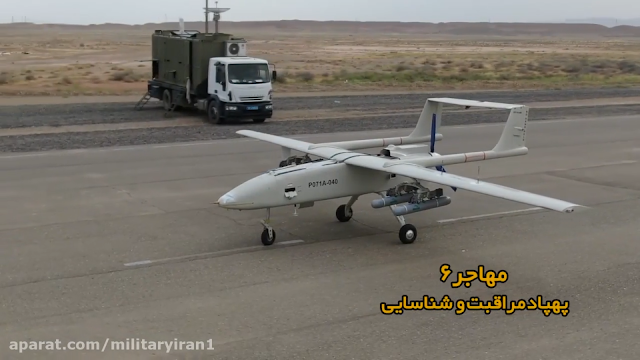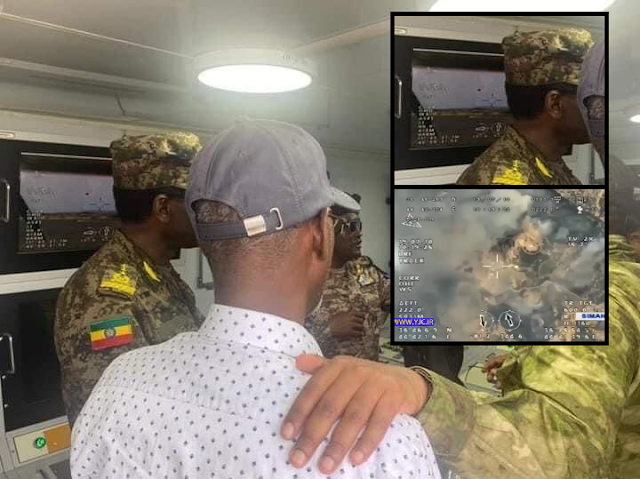Amnesty International

In a very short period of time, since armed conflict broke out in the country’s northern Tigray region in November 2020, the Ethiopian Air Force has become a major operator of the world’s second-tier armed drone platforms. Produced by Turkey, China, and Iran, these aircraft are affordable, effective, and (most importantly) available for purchase with seemingly few export or proliferation controls. And the Ethiopian Air Force clearly has no reluctance to use them. As drone strikes continue to ramp up, and civilian casualties mount (at least 300 dead over the last six months), there is an increased need to accurately identify the weapons used in the attacks so that investigators can properly attribute responsibility for civilian casualties and violations of international humanitarian law (IHL).


Currently, the Ethiopian Air Force operates three main armed drones: the Turkish TB2, the Iranian Mohajer-6, and the Chinese Wing Loong. The Wing Loongs have most likely been supplied by the United Arab Emirates, which have provided the same aircraft in other conflicts,
such as to support the LNA in Libya.
At the moment, these three drones only launch proprietary munitions linked to that specific
At the moment, these three drones only launch proprietary munitions linked to that specific aircraft. Until manufacturers provide cross-platform capability, we can be confident that TB2s launch Turkish munitions, Mohajer-6s launch Iranian munitions, and Wing Loongs launch Chinese munitions. In Ethiopia, based on the evidence we have seen so far, each airframe is currently paired with a single weapon: the MAM-L, the Qaem-5, and the Blue Arrow-7, respectively.
[Note that the best work on the technical aspects of these drone strikes is currently being done by Oryx and Wim Zwijnenburg, and you should read their work here, here, here, and here, for example.]
https://twitter.com/wammezz/status/1488460533690949634/photo/1
When identifying any weapon, I always try to match key ID features – namely, those design or manufacturing features on a piece of ordnance that are unique to that munition. Ideally, those features would tend to survive detonation, so scrap and fragments can be positively identified as well. As we have seen at Citizen Evidence Lab in previous situations–such as in Yemen, Serbia, Guinea, and others–key ID features are the best way to have confidence that we know which weapons are used in which specific cases.
For modern drone-launched weapons, I have found that the best key ID features involve the brackets used to attach the wings and fins to the main body or fuselage of the weapon. The types of brackets, and the screw patterns, are unique for each munition used in Ethiopia.
The Chinese Wing Loongs fire Blue Arrow-7s, which have two long pointed brackets on each rear fin.

I have found those brackets tend to remain identifiable after the strike. For example, here is one such bracket from Libya.

Turkish TB2 drones can carry a variety of munitions, but so far in Ethiopia we have only seen them loaded with MAM-L glide bombs.

The MAM-L uses a two bracket/two screw configuration on its rear fins.

Much to the frustration of weapons investigators like me, Iranian weapons frequently change design features and nomenclatures, and the specific details of ordnance provided to proxies, in particular, change often without notice. Fortunately for this investigation, though, the Qaem-5 (also sometimes called the Ghaem-5) has been standardized for export.

The rear section of the weapon has four adjustable fins that steer the munition. Those fins are attached to the body with a square four-screw pattern on each actuator.

In other conflicts–where we are either less sure of the provenance of the munitions, or there are a wider variety of weapon options (including legacy systems)–we’d have less confidence in identifications based upon smaller design details. But, for the time being, identifying the drone-dropped ordnance used by the Ethiopian Air Force is fairly straightforward if the right scraps or fragments are found.
Iranian Mohajer-6 Drones Spotted In Ethiopia
The apparent delivery of Iranian UCAVs to Ethiopia is highly notable, as the country also maintains a close relationship with Israel and is a frequent importer of Israeli armament and other military services such as training. In fact, Ethiopia’s inventory of unmanned aerial vehicles previously consisted almost entirely of Israeli systems like the Aerostar UAS and WanderB mini-UAS. [1] The current service status of these UAVs is unclear however, and the fact that none of these can be armed likely caused Ethiopia to look for other sources for the acquisitions of UCAVs. Contrary to popular expectations, this source appears to have been Iran rather than Turkey or China.
Identification of the UAVs in question posed something of a challenge. Though initial reports suggested the Chinese Harrier Hawk II Air Sniper (Yaoying II) or the Wing Loong II, potentially the same examples that have been deployed in neighbouring Eritrea by the UAE, the dimensions and distinctive shape of the drone on satellite imagery significantly narrowed the field and decisively eliminated this possibility. Complicating matters however, is the fact that no usable ground imagery is as of yet available, and the market of possible providers has become wide and diverse. Though the satellite imagery confirms the Mohajer-6 to be a very likely candidate, the identifying factor thus became the associated GCS, which was imaged more clearly.
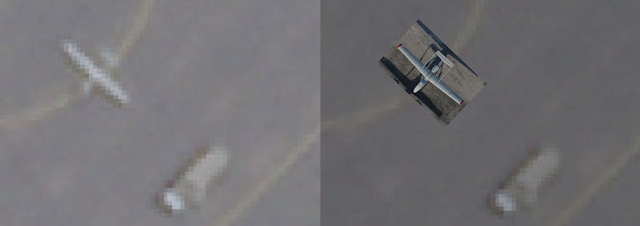 |
Drone left, image overlay right. Image by Planet Labs. |
The Mohajer-6 UCAV is itself the latest design in the Mohajer-series of UAVs. First unveiled in 2017, the Mohajer-6 entered mass production a year later and has meanwhile entered service with the three branches of Iran’s Revolutionary Guards’, with several even having been given to Iraq’s Popular Mobilisation Forces (PMF). [6] The manufacturer of the system claims an operating range of 200km and an effective payload of up to 40kg of ordnance, which would consist of two to four Ghaem-1, 5 or 9 precision-guided munitions (PGMs) respectively. It couples these lightweight capabilities with an endurance of 12 hours and a maximum flight altitude of around 5.500 metres. [7] For its target acquisition and reconnaissance capabilities, the Mohajer-6 uses an EOAS-I-18A FLIR turret. [8]



